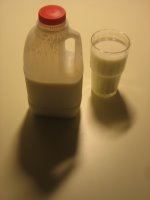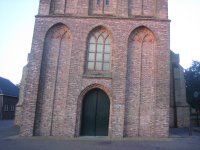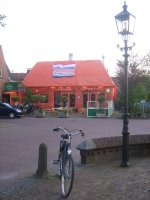If you have the time one evening or weekend, please listen to it.
There are numerous statements thoughout the conversation which thread into the issues facing Youngstown and the region: no-growth sprawl, the power structure of Cleveland leadership, building consensus, learning best practices from other communities, sustainable development, how today's living density was affected by public health, the safety of the housing stock, and the joy of pierogies.
After listening to it all, I started thinking about the path dependency of a city.
Some might argue that in order to experience a great change and rebirth, a city first needs to decline to the point where has shaken off the old guard. That is, only through the departing of the steel industry and old-school corporate bosses, exiling the vestages of organized crime, and jailing corrupt politicians - that so little is left, except for the chance to begin anew.
That to live again, one must first die.
And the other bloggers from Cleveland during the interview seem to think that old-school mentality has not left their city, and is holding it back. Perhaps the same could be said of Youngstown, or that only a small percentage of the population here is ready to move forward, compared to other mentioned communities like Portland or Seattle whose aggregate sentiment of the population is one of pride, collaboration, and progress.
But not all the paths of a heavy industrial region need to recover in the same way, even if their historical paths are similar.
Mr. Morrison admitted to his amazement when 1,300 people showed up for the the first public Youngstown 2010 planning meeting, since about 200 to 300 were expected. The community just said, "enough, we're moving on" and became part of the planning process.
But this city is still no utopia because a bunch of people showed up one night.
There is much work to be done, and its progress is a process.
But the process has shown that engaging the community is extremely important, the lack of which may be creating future difficulities.
- - -
Inefficiency vs. Inclusivity.
When I first started working in good ol' Netherlands, a colleague wanted to impress upon me how the Dutch think, and how the Polder Model works in that country.
"so what the heck is the polder model?"
A polder is a space of low-lying land, usually surrounded by dikes. The Netherlands is pretty much like the Louisiana of Europe. A great number of rivers meet the North Sea there, and primarily the topology of the country was one giant flat and soggy delta.
But the people of that area continually engineered their landscape to make it more inhabitable. Canals were built, as were windmills to pump the water from one place and shift it to another. And thus, the land was reclaimed. Here's a picture from just outside the city of Rotterdam.

So as the saying goes, "god schiep de wereld, maar Nederlanders creëerden Nederland."
or "God created the world, but the Dutch created the Netherlands."
As the country developed further, more and more land needed to be claimed from the sea and the swamps. So polders were constructed to begin the process of dehydrating more land. And we're not just talking about a farm here or there. Entire new regions in that country are now dry land where once it was not.
.png)
Connected to this development was the notion that many, many parties needed to come together to create the best solution. Not just the power brokers, and not just the politicians were needed, but also the farmers, the shippers, the railroads, and the public.
Whether you agree with this statement or not, it was descibed to me that the American process is more like "power pluralism", where only the business interests and the politicans come together and push their agendas through, without the consultation of all the other diverse stakeholders, even if they are less significant in size.
And so the polder model stresses that optimal solutions, which maybe not be efficiently reached in a short amount of time, come about when the opinions of everyone are included, eventually reaching a consensus.
- - -
Perhaps the polder aspect of the Youngstown 2010 preparation is what attracted all these people to it.
And perhaps the lack of input from all the diverse stakeholders is what's creating some of the problems for casino development in ohio, the reconfiguration of Federal Street in downtown Youngstown, and the extension of YSU's campus towards the central business district.
In all three cases, people feel (by fact or perception) that they have been shut out of the process: that casinos in Cleveland benefit only a small minority and not the entire region; that planning for federal street reconfiguration is heavy in engineering but lacks asthetic consideration and public input; and that not all the landowners were not properly consulted before as the university initiated its growth south.
For these projects, and for future ones, maybe the people with the plans should ask themselves, "have we incorporated the polder model enough to arrive at the best solution?"
It might serve as a good exercise every once and a while.

For if it's good for working to reclaim the sea, maybe it's good for reclaiming a downtown.






















